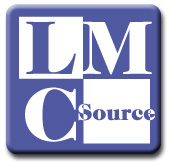 |
 |
 |
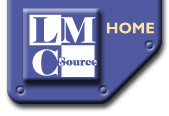 |

What's New
 My Reading and Writing Log Microsoft Access™ Edition
My Reading and Writing Log Microsoft Access™ Edition
Landon D. Loertscher and David V. Loertscher; 2005; ISBN:
1-933170-21-2; Price: $100.00
Tired of electronic reading programs that are enormously expensive?
Tired of limiting what a child or teen reads?
Tired of awarding reading points only for factual recall?
Consider My Reading and Writing Log.
If you have Microsoft Access™ available in the classroom, the library, or the school, teachers can have each child create a database not only for what they are reading but also to allow them to write about their reading correlated to the writing program in the school.
Features include:
- Each student has a private database to record their reading and writing about what they read. (no tests to take)
- The student can read anything:
- Books, periodical articles, graphic novels, newspapers, reference books, Internet sites, etc.
- Anything recommended by teachers, librarians, parents, friends, or what they discover themselves.
- Materials at, below, or above their reading level.
- Parts of things or the whole thing (specific chapters in a nonfiction book, for example).
- The student writes about what they read:
- A type of writing being studied with their teacher (a character sketch, a personal response, outline of the topic, description of the plot, important ideas, answers to essential questions, research notes, etc.)
- Whether or not they liked the book or notes of recommendation to a friend.
- Notes on the topic of a classroom unit where they are reading a lot about the topic.
- The student then can email a report of what they read and what they wrote to their teacher or librarian for a particular time period (reading for a topical unit, a week or two, a semester, etc.)
- The librarian can track selected students in a database.
- The teacher can track every student in each class up to ten periods a day and 49 students per class.
- Both the teacher and the librarian can add comments about the reading and writing to the database.
 SuperTeaching: 15 THINK! Models for Instructional Improvement in College Courses, Online Learning, and Professional Development
SuperTeaching: 15 THINK! Models for Instructional Improvement in College Courses, Online Learning, and Professional Development
David V. Loertscher; Hi Willow Research and Publishing; 2006; ISBN 1-933170-19-0; $25.00
Teaching adults, whether in colleges, school districts, or online often takes the form of textbook/lecture/research paper as the main technique of instruction. Students of this mode are expected to read, listen, and regurgitate what they have outguessed the teacher might want. In the days of the Internet, term papers often become nothing more than exercises in plagiarism.
The fifteen models in Super Teaching provide new avenues to make learning experiences exciting, engaging, active, and push high-level thinking. Each follows constructivist ideas of teaching and learning emphasizing collaboration among students to lift everyone from passive learning to the realm of big ideas.
Linked with the Wiki Templates for Super Teaching, these 15 models encourage professors and professional developers to link themselves to libraries and make new uses of an information-rich and technology-rich environment where plagiarism is eliminated.
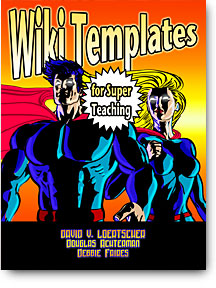 Wiki Templates for SuperTeaching
Wiki Templates for SuperTeaching
David V. Loertscher, Douglas Achterman, and Debbie Faires; Hi Willow Research and Publishing; 2006; Booklet and CD;
ISBN 1-933170-20-4; $50.00
A wiki is a collaborative workspace – a way groups can build a document, an article, a project or do other collaborative writing or planning together. Most of us know about Wikipedia.org – the largest encyclopedia in the world where anyone can write an article and anyone can edit it. The 50+ templates in this collection are collaborative spaces where the Think! Models of Ban Those Bird Units and SuperTeaching can be put into practice on line. And, best of all, at this point, they can be used for free from anywhere in the world.
The templates in this collection have been designed for use in Seedwiki.com software, primarily because when the students begin the editing process, they will see a familiar word processing toolbar much like Microsoft Word. The templates can be tweaked to be used in any other wiki software. How do you use them? First, you get your own account on Seedwiki.com. Then you create your own wiki for a unit of instruction – say Causes of the Civil War. Then you copy a template from our disk into your wiki; add specific directions, and it’s ready for student work. This will jump start your use of this technology and provide instructional designs that match the 15 Think models created by Loertscher, Koechlin, and Zwaan.
Not only can you use the templates as designed, but they are easy to modify for your particular use. Once you see our instructional designs, you can build your own from scratch.
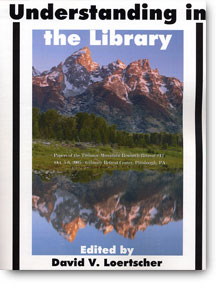 Understanding In the Library: Papers of the Treasure Mountain Research Retreat #12, Oct. 5-6, 2005 - Gilmary Retreat Center, Pittsburgh, PA
Understanding In the Library: Papers of the Treasure Mountain Research Retreat #12, Oct. 5-6, 2005 - Gilmary Retreat Center, Pittsburgh, PA
Edited by David V. Loertscher; 2005;
ISBN: 1-933170-16-6; Price: $35.00
Treasure Mountain is an assembly of researchers and practitioners who meet periodically to explore major issues in the School Library Media field. The current proceedings contain numerous research studies and theoretical papers dealing with constructivist learning in information-rich and technology-rich environments.
 Raise a Reader at any Age: A Librarian’s and Teacher’s Toolkit for Working with Parents
Raise a Reader at any Age: A Librarian’s and Teacher’s Toolkit for Working with Parents
by Connie Champlain, David V. Loertscher and Nancy A.S. Miller; 2005;
ISBN: 0-933170-18-2; Price: $35.00
No Child Left Behind requires schools to build relationships with the community in an effort to help every child learn to read. Raise A Reader At Any Age provides a toolkit with ready-made tri-fold and bi-fold brochures that librarians can print and modify, adding local information from a CD. These valuable brochures place the school and public library into a central role in literacy, showing parents how to use library resources for both children and teenagers. They show how to build avid and capable readers. The user must have access to Microsoft Word (any recent version). A quick and indespensible tool for working with individual parents, groups of parents, and doing teacher inservice.
 Time & Task Tracker for School Library Media Personnel
Time & Task Tracker for School Library Media Personnel
Nancy A.S. Miller; Hi Willow Research & Publishing, 2005;
ISBN 1-933170-17-4; $60.00
Administrators often want to know what the library media professional and support personnel do in the library. This Microsoft Excel template allows both professionals and support staff to track the number of minutes on random days spent on numerous tasks aligned with Information Power. Twice a day adults estimate the amount of time they have spent on their various tasks and enter it into a simple form. After approximately 15 randomly selected days this spreadsheet will draw amazing graphics analyzing how both professionals and support personnel spend their day. It is a very powerful tool in demonstrating the difference between the roles of professional and support personnel.
You must have Microsoft Excel on you computer to use this package.
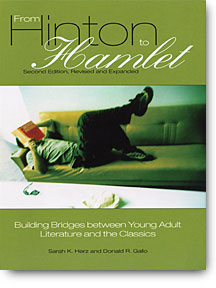 From Hinton to Hamlet, 2nd edition: Building Bridges between Young Adult Literature and the Classics
From Hinton to Hamlet, 2nd edition: Building Bridges between Young Adult Literature and the Classics
Sarah K. Herz and Donald R. Gallo; 2005; ISBN: 0-313-32452-2; Greenwood Press; Price: $40.00
The required classics in grades 7-12 are often too complex and removed from adolescent experience. This informative text uses thematic groupings built around recent young adult literature (YAL) as bridges to the classics. This second edition, which the authors have revised and greatly expanded, emphasizes the goal of helping teenagers become lifetime readers, as well as critical and confident readers. By pairing the required classics and young adult literature around common themes, the authors illustrate specific theme connections and include extensive lists of annotated YAL titles at the end of each classic title.
New to this second edition:
• Features more than 1,000 titles, hundreds published in the last five years.
• Thirty-three recent YAL titles are included as theme connectors among the twelve most frequently taught classics.
• Thematic units on “War: It’s Effects and Its Aftermath” and “The Great Depression,” including the “Dust Bowl” have been expanded.
• Many new annotated YAL titles added to Archetypes.
• A step-by-step approach to writing an Author Paper using YAL

Assessing Learning: Librarians and Teachers as Partners
Violet H. Harada and Joan M. Yoshina; 2005; ISBN: 1591582008; Libraries Unlimited; Price: $40.00
Focusing on the role of library media specialists in assessing student learning, this is the first full-length book written to address its practical application in the school library media center. It is an important book for school librarians to consider as they address their role as “teachers” in schools and the accountability issues associated with that role. It places students at the center of the assessment equation and addresses the following topics as they relate specifically to school library instructional programs: purposes of assessment, essential elements of assessment, knowing what to assess, multiple methods for assessment, and management and communication of assessment results. The book’s primary audiences are library media specialists and teachers in K-12 settings. It is also relevant for other educators, who are centrally involved in K-12 programs including district, regional and state library media coordinators, building level administrators, and library school educators. The authors cull from their own 30-year careers as library practitioners, university instructors, and workshop presenters to present doable, practical methods for the library media specialist to be involved in assessing student learning. Though this topic appears in the theoretical literature and is addressed in journal articles or chapters in contributed books, this is the first practical in-depth analysis for the school library field.
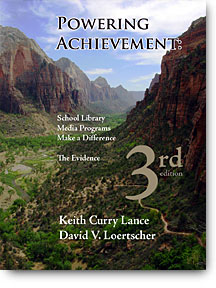
POWERING ACHIEVEMENT:
SCHOOL LIBRARY MEDIA PROGRAMS MAKE A DIFFERENCE: THE EVIDENCE
3rd Edition
Keith Curry Lance and David V. Loertscher
Hi Willow Research & Publishing, 2005;
ISBN 1-933170-14-X; $35.00
Hundreds of school librarians have made presentations about the Lance studies linking school library media programs to achievement. The third edition of this standard work helps presenters even more by updating every presentation to include all 14 of the Lance studies through the Illinois study completed in 2005. Yes, there is still a one minute, a five minute, and a 15 minute presentation complete with PowerPoint slides available on the LMC Source website for download but every one has been updated and re-phrased if needed by the addition of all 14 studies in some 8,000 schools. In addition to the presentations, there are many discussion starters to help school librarians conduct focus groups centering on various aspects of the library media program that boost achievement. This new edition also has doubled the size of the appendixes with many handout connected to the various studies in the book. And finally, there are many studies both listed and described that exist beyond the Lance studies; the Ohio study by Ross Todd being just one example. Any school library media specialist who anticipates making any kind of presentation about the Lance studies or other studies linking library media programs to achievement should have this new edition.
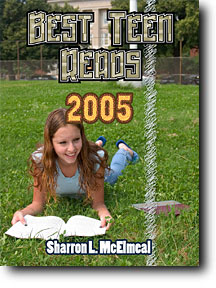 The Best Teen Reads 2005
The Best Teen Reads 2005
Sharron L. McElmeel; Hi Willow Research & Publishing; 2005; ISBN 1-933170-12-3; $18.00
Who decides what are the best teen reads? Sharron McElmeel has compiled a list including the last several years of teen publications that have received star reviews in the reviewing media or have been tapped as award-winning books in the past year. The main list includes these recommended materials, but other sections of the book provide a guide to the best graphic novels, audio books, poetry, and picture books. Along the way McElmeel spotlights authors and provides tips for both using the books in school and public libraries. Done in the form of an annotated checklist, the book has been created as an useful selection tool and a guide for book discussions in selection groups, classes or workshops in young adult materials.
 Young Adult Literature and Multimedia: A Quick Guide
Young Adult Literature and Multimedia: A Quick Guide
David V. Loertscher and Sharron L. McElmeel; Hi Willow Research and Publishing; 2005; ISBN 1-933170-10-7; $30.00
Two- and four-page spreads cover many genres in Young Adult Literature and Multimedia. Each spread gives a history of the genre, sample titles, and spotlights authors and how to keep up in that particular genre. Topics include: The young adult novel, fantasy and science fiction, history, popular music, and teen television, among others.
Its greatest strengths in comparison to other guides on young adult literature is its price, yet it is a quality introduction for teachers and librarians.
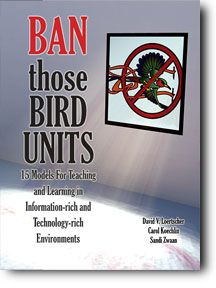 Ban Those Bird Units! 15 Models for Teaching and Learning in Information-rich and Technology-rich Environments
Ban Those Bird Units! 15 Models for Teaching and Learning in Information-rich and Technology-rich Environments
David V. Loertscher, Carol Koechlin, and Sandi Zwaan; Hi Willow Research and Publishing; 2004; ISBN 0-931510-06-9; $35.00
Bird units are fill-in-the-blank library assignments, or reports; the result of which is copying or outright plagiarism. This book provides ways to ban such low-level activities and replace them with exciting learning experiences that link the library and technology into achievement. Models, sample units, forms, and links to popular educational practices such as Understanding by Design are provided. The models work K-12 and across all disciplines. They work when teachers are interested in going beyond the textbook and the lecture. They work extremely well in differentiated instruction and in classrooms where the students cannot understand the textbook. The models show how to integrate information literacy and technology into learning topics based on state standards. The book is a companion work to Build Your Own Information Literate School. It’s a guide for teachers as much as it is for librarians and technology specialists. Great for planning collaborative units and doing professional development with teachers.
